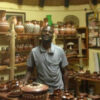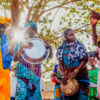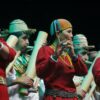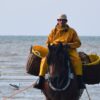In the Biobío region of Chile, several indigenous Mapuche communities worked together with Chile’s National Tourism Administration to offer visitors a series of trails in the mountain, from 9 to 100 km long. The network of Pehuenche tourist trails85 is a public-private-community partnership resulting in a tourism activity.
“This project has been a useful learning experience for each one of the institutions and individuals involved.”86

- The project had a strong start because the stakeholders applied to many different sources of start-up funding.
- The project benefits local communities. All revenues generated go to communities, the NGO and tourism services of the four communities involved in the project.87
- Community members were empowered to understand the potential tourism can bring to them, and trained to welcome guests. Community members themselves developed the trails and have come to feel at ease in their role as tour guides and tourism stakeholders.
- The tours offer visitors a holistic view of Pehuence culture and activities linked to oral traditions and expressions (Mapudungun classes, sharing of local myths and legends, etc.), knowledge and practices concerning nature and the universe (natural environment, medicine, food wisdom sharing) and traditional craftsmanship (sheep wool use and souvenirs made from wool).

- Some community members were concerned about the commodification of their cultural identity. In that respect, it was crucial to explain that sometimes, at the beginning, the tourism development involves only a couple of people in each community, but with the approval of the entire group. Through the process, community members have learnt how to set up tourism businesses, and guides learned to “believe” in being part of these commercial enterprises, allaying concerns over the commodification of their community and region.

Collaboration: This project not only gathers national and community-based partners but also several programmes, NGOs and associations such as the Sendero de Chile programme and the Servicio País programme. It has been a useful learning experience for each one of the institutions and individuals involved. A key element has been ongoing training and capacity building, collaboration, coordination and support on the basis of mutual trust.
- 85 United Nation World Tourism Organization (2012), Tourism and Intangible Cultural Heritage. 41-42. Available at: https://doi.org/10.18111/9789284414796
- 86 United Nation World Tourism Organization (2012), Tourism and Intangible Cultural Heritage. 41. Available at: https://doi.org/10.18111/9789284414796
- 87 The trails arose as an association between the indigenous communities, the Sendero de Chile Programme, the NGO Sepade, and the Servicio Pais Programme.

















